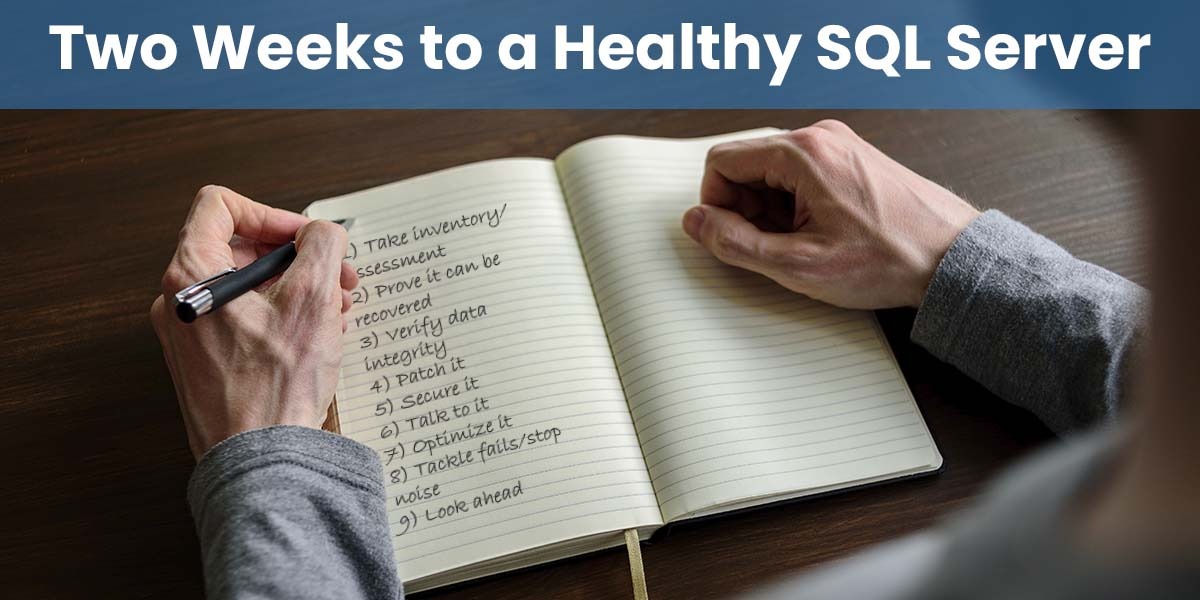Many companies have the wrong people managing their databases.
It sounds mean, out of context. But note we didn’t say “bad people” or “mean people,” just the wrong people to ensure a healthy SQL Server.
Sometimes it’s even worse than that. It’s not the wrong person, it’s “no person.” Nobody owns its uptime, recoverability, or performance. It’s just a bunch of folks who might say, “Well, I thought the vendor managed it. Doesn’t the IT service provider own it? Doesn’t Mary in tech services own it?”
That’s all we mean by “wrong people.” Or maybe the owner is clearly identified and it’s you, but you’ve never had the training, you have a million other things you are expert at that take your time, and you don’t know what you don’t know.
This series is dedicated to all of you who felt like that was mean because it hit too close to home.

You aren’t the wrong person. You just need to know what you don’t know. You need to be put on the right path (Straight path?). Or maybe it’s your job to be the first to say, “Not it!” and clearly identify the owner and tell them to start owning. That’s the main idea of the next ten posts coming in this series…
“You CAN be the right person to manage a healthy SQL Server environment, there is a place to start, you can do it, and here’s a plan to start down the path to SQL Server peace of mind.”
Will your SQL Server Environment Survive? And Thrive?
Are you at risk of data loss? Are you in trouble already and just one hard shutdown away from realizing it when it’s too late to do anything about it? Is performance acceptable? How do you make the users stop blaming the database? Are you safe and secure? Where should you start? Will your SQL Server environment and all of that mission-critical business data be safe where it is? How do I measure myself and the SQL Server estate I’m responsible for?
The Risks: Imagine the worst then multiply it.

As a SQL Server consultant – I’ve had too many sad conversations with sales prospects that include me saying things like, “No, I’m sorry, there’s no hope for that data,” or “Wait, you spent all that money on SQL licensing when all you needed to do was fix these VM settings and stop applying the brakes in your setup config?!” or “Yeah, we likely can help you, but it’s going to take all weekend, and it’s going to be expensive.”
SQL Server is not designed to be a set-it-and-forget-it application. You need to talk to it. You need to inspect it. You need to secure it, patch it, back it up, confirm there isn’t corruption brewing under the surface, and do a few things to keep it performing well.
If you follow this series of blog posts to the end, you’ll be further from some of the disasters folks call us up with, you’ll be better than most environments we do health checks on – and you’ll know what you don’t know and have a plan to learn about it, fix it, and truly OWN it. In short, you’ll be the right person managing your SQL Server.
I want to help! I’ve been there!!!
22+ years ago, I fell into Database Administration. I’ve been the nervous new person responsible for all the data. I know how it feels not to be sure. This series is a way to give back and get you on the right track. You can do it. You can own your healthy SQL Server estate, and these posts can help be a building block on your journey.
Plan of attack
- Read the next ten posts in the series.
- Tackle the “homework” at the end of each post. Learn, grow, fix.
- Do a self-assessment at the end and see what’s next for you.
That’s it. Check these blog posts out and get on the road to DBA ownership.
Get Ready!
Subscribe for updates (sidebar on the right). Check back regularly. Watch the StraightPathSQL Twitter feed for the next post. If you spend the time reading the posts, studying your environment, and applying the changes, you will be on your way to being a DBA hero in your healthy SQL Server environment. Your business users may not even know the disasters you are about to save them from. But your future self thanks you for slaying these dragons in a proactive way. It’s so much easier that way!
Let’s Go!



4 thoughts on “Two Weeks to a Healthy SQL Server”